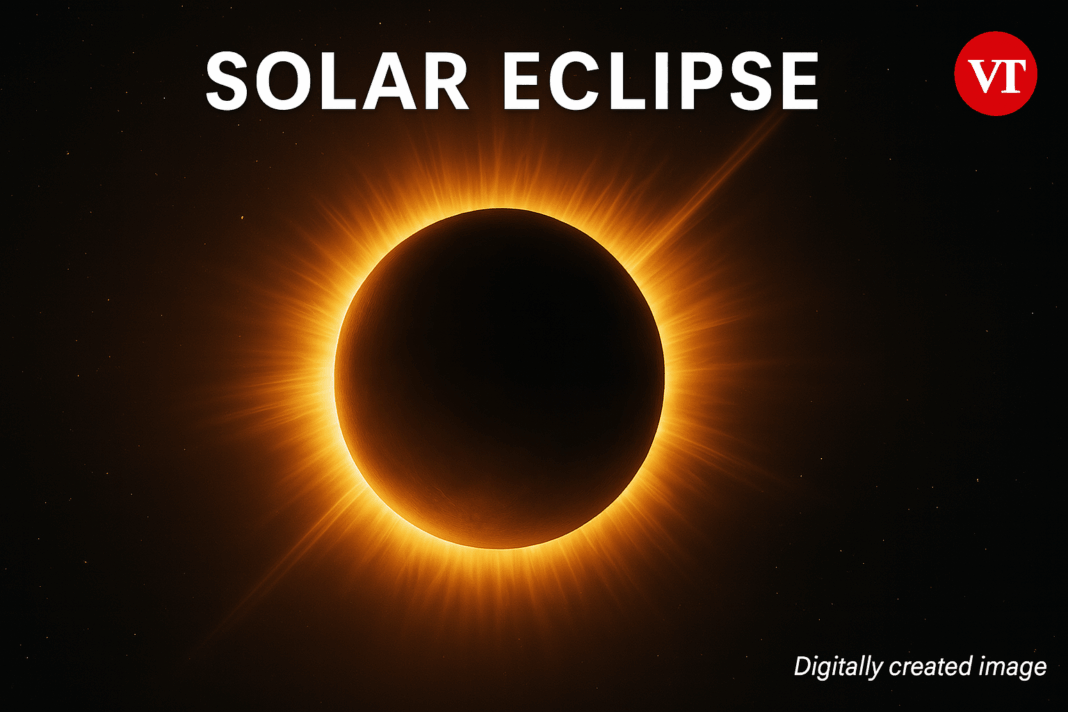- The total solar eclipse will occur on August 2, 2027, spanning ten countries.
- It will last up to 6 minutes and 23 seconds—one of the longest visible from land in over 100 years.
- The eclipse path will cross southern Europe, North Africa, and parts of the Middle East.
- Over 89 million people live within the path of totality.
- Proper solar eclipse glasses are essential for safe viewing.
The Big Picture
A rare astronomical event is poised to dazzle skywatchers on August 2, 2027, when a total solar eclipse will darken the skies across parts of Europe, North Africa, and the Middle East. With a totality duration of up to 6 minutes and 23 seconds, this will be the longest such eclipse visible from land since 1991—and it may remain unmatched until 2114, according to Metro.
The rare celestial alignment will be visible across a narrow band about 160 miles wide, touching countries including Spain, Morocco, Algeria, Tunisia, Libya, Egypt, Sudan, Saudi Arabia, Yemen, and Somalia. This path of totality will bring temporary darkness to regions where nearly 89 million people reside, as noted by Metro.
What’s New
According to Metro, the eclipse will begin over the Atlantic Ocean at 05:19 UTC and reach its longest totality—6 minutes and 22 seconds—over Egypt at around 12:44 UTC. After crossing Europe and North Africa, the eclipse will continue across the Red Sea, Saudi Arabia, and Yemen, ending with a dramatic sunset over the Indian Ocean near the Chagos Archipelago.
Senior astronomer Greg Brown from the Royal Museums Greenwich explained that such a long duration is highly unusual. “It varies from only a few seconds at its shortest to a theoretical maximum of 7.5 minutes,” he told Metro. The variation depends on the changing apparent sizes of the Moon and Sun due to their elliptical orbits.
What They’re Saying
The eclipse is particularly notable because it will be widely visible from populated areas—unlike the previous longest eclipse of this century, which occurred on July 22, 2009, mostly over the Pacific Ocean. “While the 2009 eclipse was longer, it occurred almost entirely over the ocean, making it very difficult to observe,” Brown told Metro.
How to Watch Safely
Experts strongly advise against looking at the eclipse without proper protection. Even during totality, the Sun’s rays can cause serious eye damage. Viewers should use certified eclipse glasses or use indirect viewing methods like pinhole projectors. Common household items—such as a strainer or even interlaced fingers—can be used to project the eclipse’s image safely onto a flat surface.
Why It Matters
Solar eclipses are extraordinary events that remind us of the precise cosmic dance between the Earth, Moon, and Sun. As Metro puts it, eclipses only occur because the Moon is both 400 times smaller and 400 times closer to Earth than the Sun—allowing it to align perfectly and block out the sunlight.
This upcoming eclipse will offer an extended opportunity to witness totality from land, making it a landmark moment in observational astronomy. With global visibility across multiple continents, it may also become a cultural touchpoint—drawing millions of skywatchers to witness nature’s grandest show.
What’s Next?
Contrary to online rumors, there will not be a total eclipse on August 2, 2025. The next solar event will occur on September 21, 2025, but it will only be a partial eclipse visible across parts of Australia, Antarctica, and the surrounding oceans, according to Metro.
Follow Virginia Times for regular news updates. Stay informed with the latest headlines, breaking stories, and in-depth reporting from around the world.
A global media for the latest news, entertainment, music fashion, and more.















